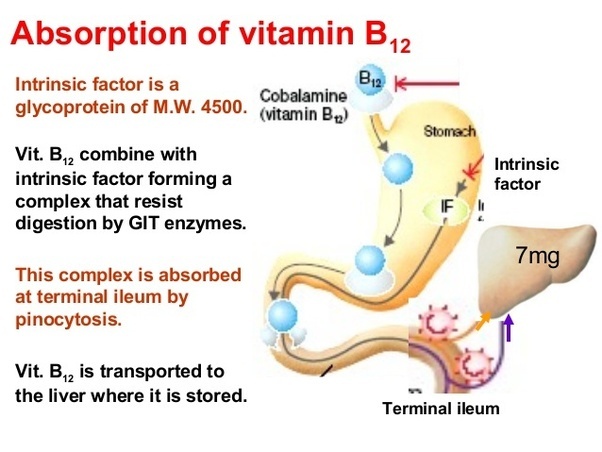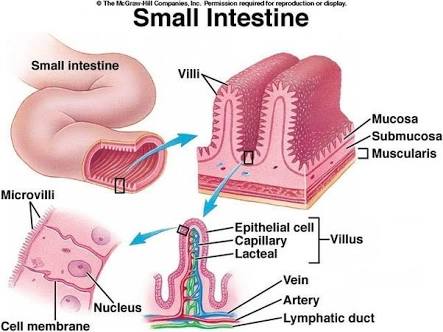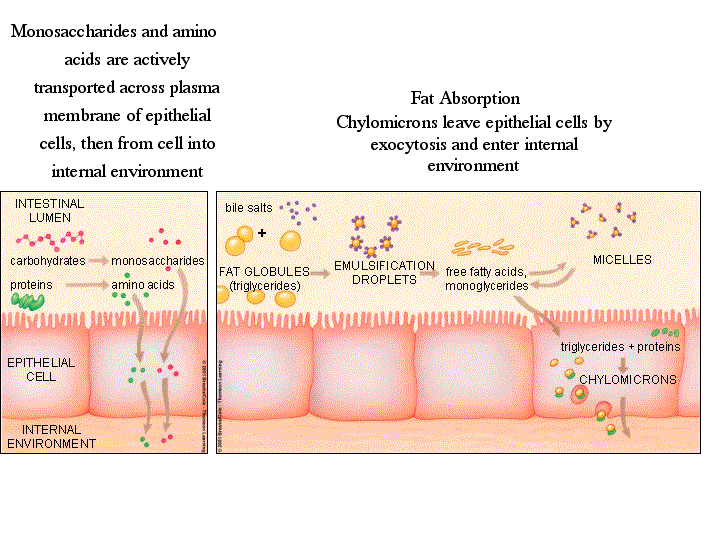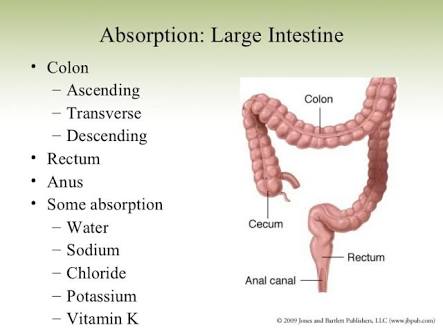What organ is responsible for the absorption of nutrients derived from the foods we eat?
1 Answer
After hearing the word 'absorption' the first organ which hop into mind is small intestine. But wait! Because there are two other also:
Small Intestine
Large intestine
Stomach
Explanation:
Absorption in Stomach
The role of stomach in absorption is not that salient. Mostly water
Stomach mainly facilitates absorption of vitamin

Absorption in Small intestine
Small intestine is called as small because of its shorter diameter. But if we consider length, it's not at all small. It's about
The paramount features of small intestine which make it spectacular absorbing agent of several nutrients are:

Villi are structurally adapted to absorb maximum nutrients at faster rate. For example: villi are single cell thick, thus nutrients can easily cross their permeable membranes to get into bloodstream & villi are also supplied with rich network of capillaries and also contain vessels known as lacteal of lymphatic system.
Small intestine absorbs almost all the nutrients i.e. amino acids, glucose, bile salts, fatty acids and glycerols and is also crucial in the absorption of fat-soluble vitamins (Vitamin A, D, E and K) & vitamin

Absorption in Large intestine or Colon
There are trillions of bacteria, yeasts, and parasites living in our intestines, mostly in the colon. Over 400 species of organisms live in the colon.
Large intestine is primarily involved in absorption of water. However, it also absorbs some ions and nutrients released by gut bacteria, specially several vitamins e.g vitamin K. It also absorbs water which remains in the undigested food.

Hope it helps...

